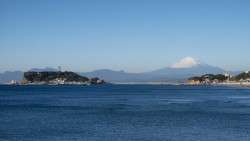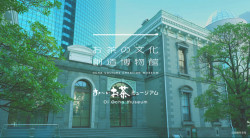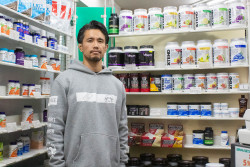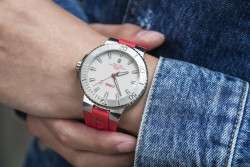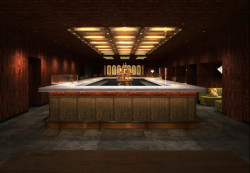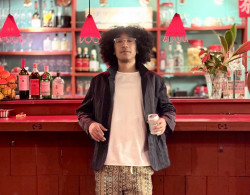
For the residents of Sammu, a little town in Chiba Prefecture in the flight path for nearby Narita International Airport, airplanes are as much a part of the landscape as rice fields. While these two things may seem miles apart, a new art project will bring them closer together.
Tomohito and Nagisa Minowa, organic rice farmers from Sammu, found a receptive audience at city hall when they first proposed the idea. The Minowas, who have run similar projects in France and Fukushima Prefecture, paired up with local artist Barusa Mikoyasu and more than 100 volunteers to make the first design a reality. Planted in June, the multicolored seedlings are now filling in Mikoyasu’s design. Based on a popular Japanese fairy tale, Tsuru no Ongaishi (“The Gift of the Crane”), it depicts a crane in flight carrying a piece of silk.
Planted just below a small park that offers a good view over the adjacent fields, the tambo (rice field) belongs to Akira Inoue, another Sammu organic rice farmer. Measuring 3,300 square meters, it isn’t huge—but it’s a good start.
“There’s a possibility that the tambo art will be visible from planes flying to and from Narita,” says Nagisa Minowa. “If it isn’t visible this year, we’ll find a better location or work on a larger drawing to provide an attractive site for tourists.”
The Tambo Art Project is an official part of Sammu’s plans to prepare for the 2020 Olympics. City staff also turned out in droves to help plant the field in June and to manage a viewing festival. An October harvest event is on the city calendar and Sammu offered funds to support the project.
For the Minowas, the Sammu Project is a natural extension of their own passions. Tomohito, a sixth-generation rice farmer from Sammu, met Nagisa while both worked at a landscape design firm. Tambo art brings design and agriculture together while also offering the opportunity to creatively foster community.
“We feel tambo art attracts people and gives them a starting point for getting involved in agriculture and landscape design. It lets people work together, allowing them to get closer. It also changes over the season, which draws people back to see what’s happened,” explains Nagisa.
The Sammu Project is also an extension of a similar ongoing project in Soma, Fukushima Prefecture. Working closely with Hideharu Asanuma of Youkei Design in Tokyo, and Tomoyuki Endo, a Soma rice farmer, the Minowas helped coordinate the planting of three rice fields in the town located 45 kilometers from the ailing nuclear power plant. In 2014, Soma residents planted rice for the first time since the disaster as a way to mark the event and raise morale.
Like the field in Sammu, the Soma plantings are located near a popular elevated walking path. The largest design shows a bucking horse full of life, teeth bared, and mane and tail flying.
“The people of Soma know this symbol and will see themselves, strong in body and will. It will give them energy,” Asanuma says.
The project is part of Youkei Design’s Project Nomad, a community-building effort born out of their work to help create gathering spaces for Soma residents. Arriving almost immediately after the disaster to see how they might help, the group designed and built a simple space where people could meet, something residents desperately needed in order to begin recovering personally and as a community. There, they met Endo and that the idea for the art project was born.
Sammu will run the project until 2020, and hopes visitors from around the world will come to plant, help weed, or just enjoy the view.
“We hope this will be a means to connect diverse people, to encourage people to interact and get closer. We have a simple motivation: we want to do something fun in our home town!” explains Nagisa. “And,” she adds with a smile, “if we can get people from other areas or even from other countries to visit, it’s going to be much more fun!”
Sammu Tambo Art Project. Harvest Event: October 31, 2015. Nearest station: Matsuo. www.facebook.com/tamboart.sammu

